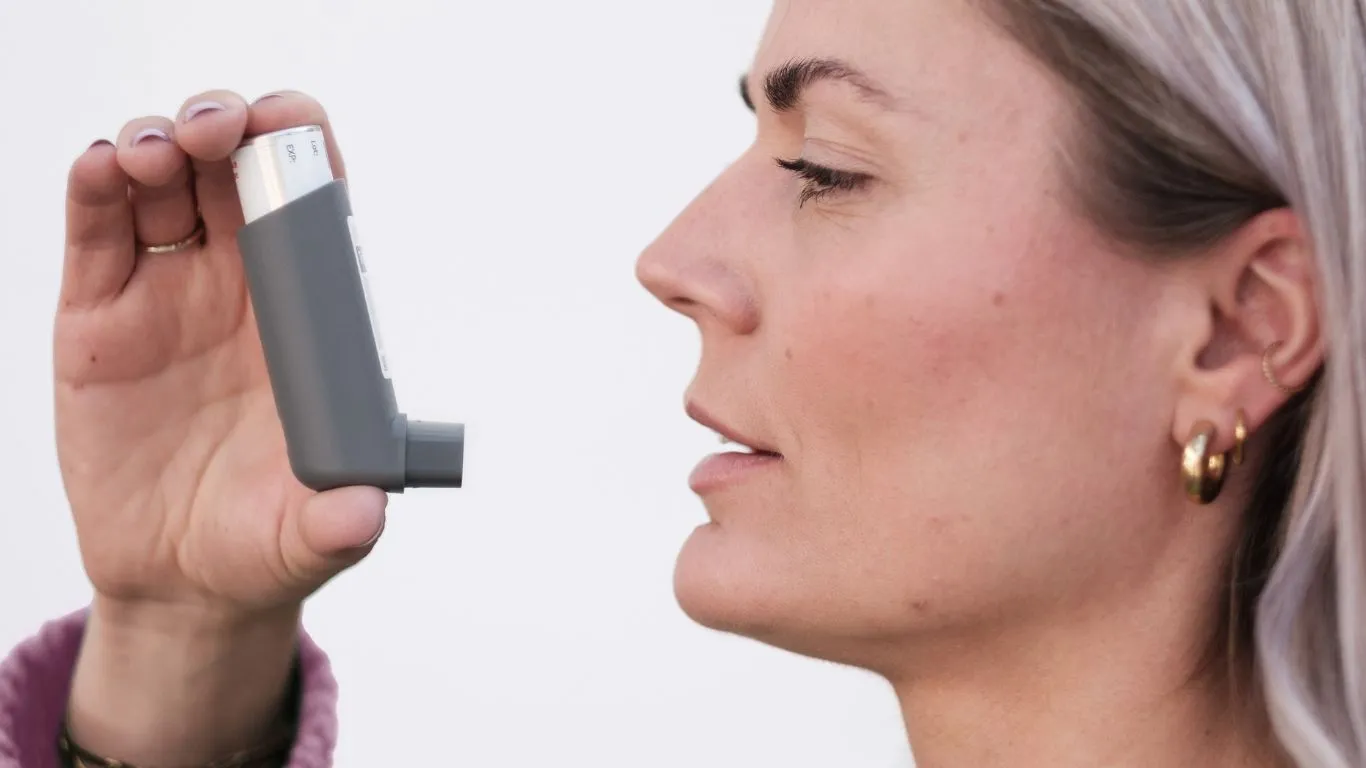Effective Tips on How to Reduce Dust Mites for Asthma Relief & Breathing Health
As a pulmonary nurse, I’ve seen firsthand how asthma can affect everyday life, especially when triggers are not effectively managed. One common culprit that people often overlook in the home is dust mites. These tiny creatures may seem harmless, but for individuals with asthma, dust mites can be a major source of irritation and discomfort. If you’re wondering how to reduce dust mites for asthma relief, you’re not alone.
Over the years, I’ve worked with many patients who’ve struggled to find relief from these microscopic allergens. In this post, I’ll walk you through how to identify the problem, why dust mites are so troublesome, and, most importantly, what practical steps you can take to manage your environment and reduce your exposure to them.
What Are Dust Mites and Why Do They Affect Asthma?

Dust mites are tiny creatures that thrive in warm, humid environments, feeding on dead skin cells that humans and pets shed. While they’re invisible to the naked eye, they can trigger a host of health issues, particularly for individuals with asthma. These microscopic insects produce waste that contains potent allergens. When dust mites’ waste particles are inhaled, they can irritate the airways, making asthma symptoms worse, leading to coughing, wheezing, shortness of breath, and even asthma attacks.
Many people may not realize that dust mites are lurking in their homes. They typically reside in soft, warm places such as bedding, carpets, and upholstery. The problem becomes even worse when you have asthma because your immune system overreacts to these allergens, making it harder to breathe and causing inflammation in the airways.
Where Do Dust Mites Live?

- Bedding: Dust mites love to live in your pillows, mattresses, and blankets. Since humans shed a lot of skin cells during sleep, these areas become a prime breeding ground for dust mites.
- Carpets and Rugs: Dust mites thrive in soft, warm fibers. Areas of your home with plush carpets are especially prone to high concentrations of dust mites.
- Upholstered Furniture: Dust mites can also be found in sofas, chairs, and cushions, particularly in areas that aren’t cleaned regularly.
- Clothing and Curtains: Dust mites can settle in fabric-covered areas, including clothing and curtains, especially in rooms with poor ventilation.
How Dust Mites Trigger Asthma Symptoms
If you have asthma, your body’s immune system may overreact to the dust mite allergens, causing your airways to become inflamed and narrow. When you breathe in dust mite waste or body parts, your immune system sees them as harmful invaders and releases chemicals that cause an allergic reaction. This can trigger a variety of asthma symptoms, such as:
- Wheezing: A high-pitched sound when you breathe, often associated with narrowed airways.
- Coughing: Especially at night, coughing can be persistent and dry.
- Shortness of Breath: Difficulty breathing, particularly during physical exertion or at night.
- Chest Tightness: A sensation of pressure in the chest, making it feel harder to breathe.
For people with asthma, these symptoms can be exacerbated by dust mites. It’s essential to minimize exposure to these allergens to keep your asthma symptoms under control and improve your overall quality of life.
Simple Ways to Reduce Dust Mites in Your Home

The good news is that there are several practical and effective strategies you can implement to reduce dust mites and get relief from asthma symptoms. You don’t have to live in a constant battle with allergens. These easy tips can help you minimize dust mites and create a healthier environment for yourself and your family:
1. Use Allergen-Proof Bedding
Your bedding is one of the primary spots where dust mites accumulate, especially your mattress and pillows. To prevent this, invest in allergen-proof covers for your mattress, pillows, and comforters. These covers are designed to keep dust mites out and provide a barrier between you and the allergens. Be sure to wash your bedding regularly in hot water (at least 130°F) to kill any mites that may have gathered.
2. Regularly Clean and Vacuum Your Home
Dusting and vacuuming are simple but effective ways to reduce dust mites. Make sure to clean your home at least once a week, focusing on areas that are often overlooked, such as baseboards and blinds. Use a vacuum cleaner with a HEPA filter to trap dust mites and other allergens. I’ve found that even just weekly cleaning can dramatically improve air quality and asthma symptoms in patients.
3. Remove or Replace Carpets and Rugs
If you suffer from asthma, consider removing carpets and rugs from your home or using washable mats instead. Carpets are a hot spot for dust mites because they trap dead skin cells and provide a perfect breeding ground. Hardwood, tile, or laminate flooring is easier to clean and less likely to harbor dust mites.
4. Control Humidity Levels
Dust mites thrive in humid environments, so keeping the humidity in your home below 50% can help reduce their presence. You can use a dehumidifier in areas where humidity is high, such as basements or bathrooms. Additionally, try to keep windows open when weather permits to allow fresh air to circulate and prevent moisture buildup.
5. Wash Curtains and Upholstery Regularly
It’s easy to forget about curtains and upholstered furniture, but these areas can also harbor dust mites. Washing curtains every few months and using a vacuum with a special upholstery attachment to clean your furniture can help reduce the buildup of allergens. Consider using a washable slipcover on sofas and chairs as an extra precaution.
Other Effective Strategies to Minimize Dust Mites

While controlling your home’s environment is a critical part of managing asthma, there are a few more strategies I’ve personally found useful over the years when helping patients with dust mite allergies. These steps go beyond just cleaning, tackling the issue from different angles to ensure you get relief from the allergens triggering your asthma symptoms.
6. Use an Air Purifier
In my experience, air purifiers are an essential part of managing asthma in homes where dust mites are a problem. A high-quality air purifier with a HEPA filter can help trap dust mites and other airborne allergens, ensuring cleaner air in your living spaces. I’ve recommended them to many of my patients who live in humid areas or have a lot of soft furnishings like carpets and curtains. Placing an air purifier in the bedroom—where we spend a lot of time—can significantly reduce allergens in the air and improve sleep quality, something many asthma sufferers struggle with.
7. Opt for Hard Surfaces Over Fabrics
In addition to reducing carpets, you might want to rethink some of your other furnishings. Dust mites love to settle into fabrics, and the more soft surfaces you have in your home, the more hiding places they find. Over the years, I’ve seen how switching to hard-surfaced furniture can make a big difference. For instance, opt for leather or faux-leather sofas instead of fabric ones. Hardwood, tile, or vinyl flooring is much easier to keep dust-free compared to carpeting.
Dealing with Dust Mites Outside the Home

Of course, dealing with dust mites is not only an indoor issue. You’d be surprised how much outdoor environments can contribute to your asthma symptoms. For example, outdoor dust and pollen can easily hitch a ride indoors, particularly during dry seasons. But don’t worry, there are ways to limit their impact without having to stay inside all the time.
8. Protect Yourself from Outdoor Allergens
If you’re someone who loves to be outside but suffers from asthma, there are a few things you can do to reduce the amount of outdoor allergens that make their way into your home. On days when the pollen or dust levels are particularly high, try to stay indoors during peak times, usually early morning or late afternoon. If you do need to go outside, wearing a hat and sunglasses can help keep allergens out of your eyes and hair. And when you return indoors, make sure to wash your clothes and take a shower to remove any allergens you’ve brought with you.
9. Regularly Clean Outdoor Furniture and Equipment
Believe it or not, dust mites can even settle on your patio furniture or outdoor equipment. I’ve seen it happen to families who spend a lot of time outside. Whether it’s the cushions on your outdoor seating or your children’s toys, dust mites can find their way into all these spaces. Regular cleaning of outdoor furniture and storage areas can reduce the number of allergens you bring into the house. Use a damp cloth to wipe down surfaces, as this helps trap dust before it can become airborne.
How to Tell if Your Asthma is Triggered by Dust Mites
One of the challenges with dust mites as an asthma trigger is that their effects are often gradual and not immediately obvious. If you’re trying to figure out whether dust mites are exacerbating your asthma symptoms, there are a few telltale signs that can help you pinpoint the problem.
10. Recognizing Common Symptoms
The most common signs that dust mites are triggering your asthma symptoms include coughing, wheezing, nasal congestion, or difficulty breathing—especially at night. If you wake up feeling particularly congested or have difficulty breathing while you’re sleeping, it’s a strong indication that dust mites may be involved. Keep track of your symptoms, especially during seasons where dust mites are more prevalent (such as spring and fall) or in places where the humidity is higher.
11. Monitoring Your Symptoms with a Peak Flow Meter
If you have asthma, you might already be familiar with a peak flow meter, a simple device that measures how well air moves in and out of your lungs. Using a peak flow meter can be a great way to monitor your asthma symptoms in real time, especially when you suspect that dust mites might be making things worse. If you notice your readings drop during or after being in a particular room or while you’re sleeping, it’s a sign that dust mites might be affecting your airways. You can discuss this data with your doctor to better manage your asthma.
12. Getting Professional Allergy Testing
If you’re unsure whether dust mites are the root cause of your asthma flare-ups, consider seeing an allergist for skin testing or blood tests. This is one of the most accurate ways to confirm your triggers. In many cases, patients find that dust mites, along with other common allergens like pet dander or mold, are contributing to their symptoms. By knowing exactly what you’re allergic to, you can make more informed decisions about how to manage your environment and reduce exposure to these allergens.
Long-Term Management: A Holistic Approach
Reducing dust mites is an important piece of the puzzle when it comes to asthma relief, but it’s not the only step. A holistic approach to asthma management involves combining environmental control measures, medications, and lifestyle changes. As someone who’s worked closely with asthma patients, I’ve learned that the most effective plans involve personalized solutions that address both the environmental factors and the individual’s specific health needs.
13. Medication and Asthma Control
While environmental control is crucial, it’s equally important to follow your doctor’s recommendations regarding medication. Controller medications, like inhaled corticosteroids, help reduce inflammation in your airways over time, while quick-relief inhalers can provide immediate relief during an asthma attack. Don’t hesitate to talk to your doctor if you find that your asthma is becoming harder to manage, even with environmental changes. They can help fine-tune your medication regimen to ensure you get the best possible control over your symptoms.
Building a Long-Term Asthma Management Plan

When it comes to asthma, managing your condition is an ongoing process. It’s not just about reducing dust mites for asthma relief in the short term—it’s about establishing a long-term strategy that helps keep your asthma under control and improves your overall quality of life. As a pulmonary nurse, I’ve always stressed the importance of creating a comprehensive asthma management plan that addresses all potential triggers, not just dust mites. This plan should include environmental control, medications, and lifestyle adjustments that work for you.
14. Regular Follow-Ups with Your Healthcare Provider
Even when you’ve taken significant steps to control dust mites and other asthma triggers, regular check-ups with your doctor are essential. I can’t stress this enough. Asthma symptoms can change over time, and your treatment plan may need to be adjusted accordingly. By scheduling regular follow-ups, you can ensure that your asthma management plan stays up-to-date, and you’ll have a chance to address any new challenges that arise. It’s also a great time to revisit your asthma control and make sure your medications are still effective.
15. Incorporating Healthy Lifestyle Changes
One of the most powerful tools for managing asthma is maintaining a healthy lifestyle. Along with dust mite control and medication, certain lifestyle changes can go a long way in improving your asthma. For instance, regular exercise is crucial for maintaining lung function. I know it may seem counterintuitive, especially for those with asthma, but with the right precautions, physical activity can help strengthen your respiratory system, making it more resilient to asthma triggers.
Start slowly and focus on exercises that are easy on the lungs, like swimming, walking, or yoga. Over time, you may find that your asthma symptoms improve as your lung capacity increases.
16. Managing Stress for Better Asthma Control
Stress is another factor that can worsen asthma symptoms. When you’re stressed, your body releases hormones that can lead to inflammation in the airways, making it harder to breathe. As someone who’s seen countless asthma patients struggle with this, I recommend incorporating stress-reducing practices into your daily routine. Meditation, deep breathing exercises, or even just taking a moment to relax each day can have a significant impact on asthma control. Finding healthy ways to manage stress can make a world of difference, especially when you’re already dealing with environmental triggers like dust mites.
How Dust Mites Affect Children with Asthma
As a mother and healthcare professional, I’ve seen how challenging it can be to manage asthma in children. When it comes to dust mites, children may be more sensitive than adults because their immune systems are still developing. If your child has asthma, their exposure to dust mites in the home can have an even greater impact on their symptoms. That’s why it’s crucial to make your home environment as safe as possible for them.
17. Creating a Safe Bedroom Environment for Your Child
One of the first places to start when managing asthma in children is their bedroom. Kids spend a significant amount of time in their rooms, and it’s a prime location for dust mites to accumulate. I recommend making a few simple changes to ensure their bedroom is as allergen-free as possible. Start by using allergen-proof mattress and pillow covers and wash all bedding regularly in hot water. Consider removing stuffed animals or toys that can collect dust, or at least wash them frequently. You might also want to switch to hardwood or tile flooring, as carpets can trap allergens.
18. Educating Your Child About Asthma Management
Another essential step in managing childhood asthma is teaching your child about their condition. As they grow, they should understand the importance of avoiding triggers like dust mites. You can help them manage their asthma by making sure they follow their prescribed medication routine and recognize when symptoms are worsening. This education can empower them to take control of their health as they become more independent.
Incorporating Allergist Recommendations for Dust Mite Control
If you’ve been managing your asthma for a while and haven’t yet seen the improvements you were hoping for, it might be time to consult an allergist. Allergists specialize in identifying specific triggers and developing personalized treatment plans. In my experience, many patients who undergo allergy testing find that their asthma symptoms improve dramatically when they address their specific allergens, including dust mites.
19. Personalized Treatment Plans from an Allergist
An allergist can help you pinpoint exactly what is triggering your asthma symptoms. For example, if dust mites are a major trigger, they may recommend certain medications, such as antihistamines, nasal corticosteroids, or allergy shots (immunotherapy). These treatments can help reduce your body’s allergic response to dust mites, offering long-term relief. Many of my patients who’ve incorporated these personalized treatments into their asthma management plan have seen remarkable improvements.
20. Environmental Allergen Control with an Allergist’s Guidance
In addition to recommending medications, an allergist can provide advice on how to further reduce allergens in your home. For example, they may recommend specific cleaning products, air purifiers, or changes to your home’s layout to minimize exposure to dust mites and other allergens. It’s an individualized approach that can make all the difference in your asthma management journey.
Final Thoughts on Reducing Dust Mites for Asthma Relief
Managing asthma and controlling dust mites can feel overwhelming at times, but with the right strategies in place, you can take back control of your health and live a more comfortable life. Over the years, I’ve learned that no single solution works for everyone—what’s most important is developing a personalized plan that fits your needs and lifestyle. By focusing on reducing dust mites, making healthy lifestyle changes, and working closely with your healthcare providers, you can find asthma relief and keep your symptoms under control.
Remember, even small changes can make a big difference. Whether it’s replacing your bedding, using an air purifier, or learning how to manage stress, every step you take brings you closer to creating an environment that’s easier on your lungs.
References
Disclaimer: This article is intended for informational purposes only and should not be considered as medical advice. Always consult your healthcare provider for personalized recommendations based on your individual health needs.

Bianca Nala is a compassionate Nurse Practitioner with a strong background in primary and respiratory care. As a health writer for Healthusias.com, she combines her clinical expertise with a talent for clear, relatable storytelling to help readers better understand their health. Bianca focuses on topics like asthma, COPD, chronic cough, and overall lung health, aiming to simplify complex medical topics without losing accuracy. Whether she’s treating patients or writing articles, Bianca is driven by a single goal: making quality healthcare knowledge accessible to everyone.






